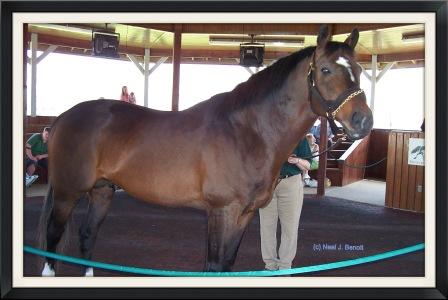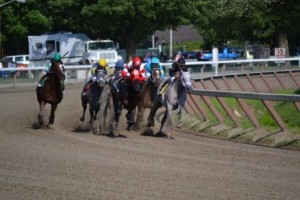Jul 31
2018
In a prior article we discussed the importance of using workouts to evaluate a horse’s current racing “form.” Workouts were described in detail and Daily Racing Form examples were provided, including the option to “merge” workouts into the running lines with DRF Formulator. Click here to view “Workouts – A Measure of Racing Form.”
In this article we’re going to feature workouts, as they are presented in TimeformUS. And specifically, how they help you spot patterns for a horse that is coming back from a layoff. The horse is Come Dancing, and she made her return to racing on July 25, 2018 in the 6th race at Saratoga. Below are her PPs.
Read More >>
Feb 27
2015
In the introductory article on the topic of Form, we explained the challenges and potential rewards for mastering the art of evaluating a horse’s current racing Form (aka Fitness, Condition, Sharpness, Readiness). Click here for a review of that article. Unlike Distance and Class, there is no singular column of data in the Racing Form or Program that identifies “Form.” But, possibly the most useful column is the Race Date column. Read More >>
Dec 4
2014
In the introductory article on Racing Form, we listed a subtopic called “Racing Into Form.” Click here for a review of the introduction on Form. Nearly every trainer at one time or another has been called into the racing secretary’s office and asked the following question: “We need to fill the fifth race on Sunday. Can you do me a favor and enter your horse in there?” The trainer knows that favors are a 2-way street when it comes to dealing with the racing secretary. So, more times than not, he/she obliges (presuming of course that his horse is sound).
However, being sound does not necessarily mean that his horse is perfectly fit. His verbal reply to the racing secretary might be, “Yea, sure … glad to help you out.” While he’s thinking to himself, I was hoping to get a couple more workouts into him before his next race, but if he wants me to enter my horse on Sunday and work him out in public … so be it.
Read More >>
Oct 10
2014

Champion CIGAR, retired in Kentucky
In a prior article we explained the various Age restrictions that occur in every thoroughbred horse race. They include 2-year old only, 3-year old only, 3 years old and upward, and 4 years old and upward. We also provided examples on how this information is presented in the Daily Racing Form. Click here to review that article.
In this article we are going to consider a strategy you can employ when factoring Age into your handicapping process. It might seem like common sense, but Age is one of those little details that sometimes gets lost in the handicapping process. For example, there have been many times when looking back at a race, I’ve noticed “Hey, the winner was the only 4-year old in the race.”
Read More >>
Jul 29
2014
In a prior article introducing the topic of Form, we mentioned two subtopics called “Throwout Races” and “Hidden Form.” The focus of this post will be to delve into both of these topics in much greater detail, and provide a high profile race as an example. That race happens to be the 2013 Belmont Stakes, won by Palace Malice.
If you recall in our introduction on Form, we provided a quote from Tom Ainsle, that says for every bet lost due to errors in judgment on factors such as class, age, or distance … you will lose two due to misreading the condition (form) factor. I can say that on the 2013 Belmont Stakes this was absolutely true for me. Of course hindsight is 20/20, but looking back at what I missed, I can clearly see that I did a poor job assessing the hidden form in Palace Malice’s past performances. Specifically, by not putting a line through 2 out of his last 3 races and underestimating his good form in workouts and on-track performances at five different racetracks. Read More >>
Aug 27
2013

In a prior article introducing the Topic of Form, we listed a subtopic referred to as Hidden Form. This can mean a lot of things to a lot of people. For some it can involve a nefarious plot by trainer and owner to “darken” a horse’s form, thereby fooling the betting public, and collecting big odds when the horse next runs. We’re not saying this ancient practice of darkening a horse’s form is extinct, but we’ll save that topic for another day.
Hidden Form we’re describing in this article involves picking up on the subtle clues in a horse’s past performances (PPs) that indicate a horse is improving in ability, but still might get overlooked by the betting public for one or more reasons. For example, maybe the trainer or jockey riding the horse aren’t well known. But somewhere in the PPs you find something that reveals the horse has improving form, albeit a bit hidden.
Read More >>
Jul 23
2013
Hang around the race track enough and you’ll hear someone refer to a horse as one of those “Horses for Courses.” In fact I was sitting in the carousel (at Saratoga) on Monday when I heard a handicapper behind me say those exact words regarding a horse in the feature race. This is not unique to Saratoga, but it sure seems be a regular occurrence here. Some speculate that it’s the atmosphere, weather, or mineral water that does the trick. I’m not sure how many horses get to drink the mineral water, but maybe there’s something to that.
In four days of racing, I can identify three winners that can be classified as “Horses for Courses.” And, something they all had in common … they were double-digit odds. Here’s a recap of each horse, including their PPs for review. Read More >>
Jun 14
2013
Workouts are like a practice for any other athlete. Most horses in training get daily exercise, but not all exercise is considered an official workout. Official means they were timed by a track clocker, and will be published in all records of a horses past performances. Standard information presented for the workout are Date, Track, Distance, Surface, Time, Qualification, and Ranking. Qualifications on the official workouts are used to help explain the nature of the workout. I have several examples to help explain the information. Read More >>
Jun 6
2013
Synonyms to Form: Fitness, Condition, Sharpness, Readiness
In a prior article we introduced the Basic Elements of Handicapping; Distance, Class, Form, and Pace. Of the four, Form might intuitively be the easiest to understand, but practically the most difficult to master.
In his book, Ainsle’s Complete Guide to Thoroughbred Horse Racing, Tom Ainsle wrote the following on the topic of Form:
“No matter how astute he (the handicapper) may be, the subtle complications of the condition factor continue to challenge his best efforts. For every bet he loses through racing luck or a misjudged ride or an error in evaluating the class of a horse, he can expect to lose two because of surprises in the form department.”
Read More >>


